#how to create token in github
Explore tagged Tumblr posts
Text
How to Generate Personal Access Token GitHub
Learning How to Generate Personal Access Token GitHub is essential for enhancing your account’s security and enabling seamless integration with various tools and automation. A Personal Access Token (PAT) is a unique string of characters that serves as a secure authentication method for interacting with the GitHub API. By following this comprehensive guide, we’ll walk you through the process of…

View On WordPress
#GitHub API#how to create personal access token in github#how to create token in github#How to Generate a Personal Access Token on GitHub#How to Generate Personal Access Token GitHub#how to generate token in github#personal access token
0 notes
Note
Thank you so much for all your hard work on your Immersive mods, they're a joy to play! You've inspired me to give modding a try, and I've got like a billion questions, but just off the top of my head: 1. What came first for you, the dialogue or the cut scenes? (And how did you learn how to do the cutscenes omg they're perfect) 2. What made you decide to involve other characters in your Sam/Sebastian mod? 3. What other tools do you use to see your additions in action? Is there a command you run to play your cutscenes or to manipulate the time of day to test something? Thank you in advance :)
Wow, you're going to make me think for a second, haha! This is a long answer so keep reading...
I start with the basic heart level daily dialogue first, then move on to dated dialogue. If I think of an event I want along the way, I will just hop over to the events and write that, then go back to dialogue. It's easier for me to keep it consistent if I go back and forth. I do have a basic overall story in mind before I start so I can generally plan events along a heart-level timeline.
I added the characters that are involved in my main character's life the most, family and close friends. Then in Seb I added some stuff for Alex just because I wanted to have a mini story with him. So it's just whichever characters seem to want to be in your story or dialogue. If I were to write one for Abigail, Sam and Seb would be in it along with her parents. Leah and Elliott don't have a lot of town connections, so other characters would be less involved or more at a surface level unless I wanted to add a story/connection for them. Elliott would have something with Willy and possibly Seb. Leah has virtually nothing in vanilla so would have to be all new.
Coding events... that is a real challenge to learn, the online resources are kind of there but limited. I pieced it together from looking at code on other mods, the Stardew modding wiki (articles on event modding and creating i18n files), and the Content Patcher GitHub instructions. I really don't recommend using my mod as a beginner reference, it's huge and full of stuff you probably don't need. I'd use a somewhat simpler one that's updated for 1.6 like Immersive Characters - Shane. The structure is similar, but my mods use a lot of dynamic tokens and conditional code that I added along the way making it much more advanced. Join the Stardew Valley discord, they have a modding help section and they are super quick to answer questions.
I also make custom sprites for events, I don't really advise doing this unless you're prepared for some extra headaches. Players DO NOT like when you mess with their sprite mods and you'll end up either ignoring a lot of complaints or making patches for Seasonal Outfits mod in particular.
To test your events, code it all up the best you can, then run debug ebi eventID in the SMAPI console. This plays your event immediately. There are some twitchy things about this involving conditions you'll learn along the way. You also need CJB Cheats Menu mod, this allows you to skip time, change friendship levels, change weather, all kinds of stuff you need for testing dialogue without actually playing the game. Bottom line, it's really trial and error. And running debug ebi like a million times on each event as you watch your characters literally walk off screen, turn the wrong way, farmer's hair pops off, so many bloopers!
9 notes
·
View notes
Text
LiftMore Update 9.04.2023
I was posting updates on my Medium (see the pinned post), but lately I haven't had time to make a thorough post. Instead, I want to update on a few things in a more informal post here.
API Updates
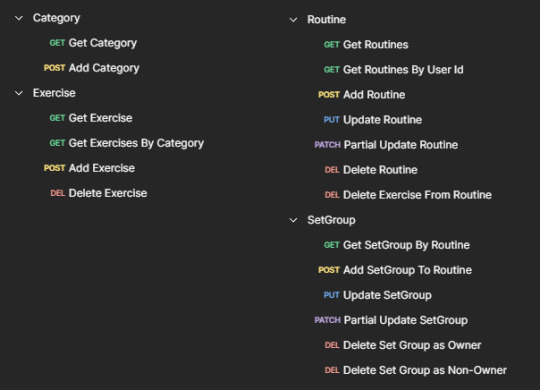
Finally went through and added all of the endpoints I'll need. There are a few endpoints on this list that I'm still in the process of refining permissions and making more secure.
Unit Testing ...ayup.. I came this far into the project without writing a single unit test. I really do want to strive for best TDD practices, but when there's no code at all in my application, it feels really unsatisfying to start working on tests before my code is capable of doing anything. Moving forward in the project, I will definitely strive to do TDD well.
Security Currently, the API just processes users via Basic Authentication. In this upcoming week, I'm planning on creating an identity server and using that server to issue my own OAuth2.0 tokens. I'm not sure yet how I want to set up my IDP service and OIDC Identity Providers.
Deployments Before moving onto the Front-End for this project, I want to make sure that my app is as secure and robust as possible. For this, I want to create 3 different environments (Development, Test, and Production), use a secret manager to inject secrets into the application, and have all of my deployments automated with GitHub Actions. In addition to all this, I want to make sure my application is set up properly between GitHub Actions and AWS so that I can manage dashboards and collect usage/cost information before having any users.
Finally, I'm happy to say that I've acquired the domain name "liftmore.app". After I get through some of the things I mentioned here, I'll push out a landing page and more information of LiftMore from a user perspective in case anybody wants to use it :)
Lastly, little brief preview of my Project board in GitHub at the moment.
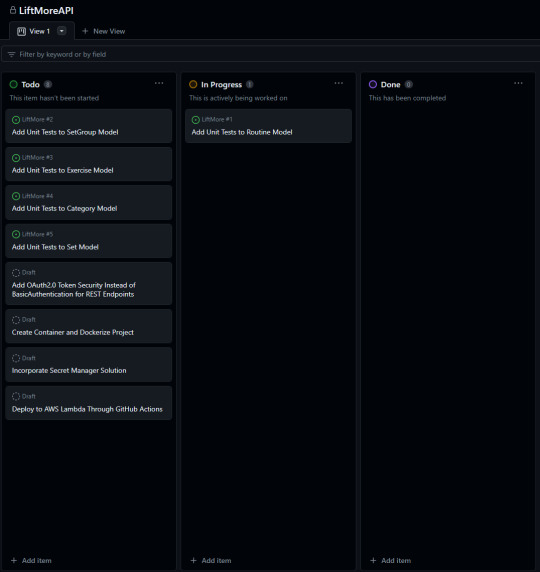
8 notes
·
View notes
Text
Wake up girlies, it's time to return to the frontline!

Guess who has insomniaaaa! 🤗💕💕
A month of cramps, nausea, increasingly worse insomnia (but a strangely good mood) has lead me down the path once again. I caught wind of some strange "gfl2" thing and after being struck with nostalgia, I grabbed bluestacks and fell into hell once more. I'd deleted gfl off my phone simply because it took too much space but now that it's on my computer, it's become DANGEROUS...! Github and clip studio up front with logistics running forever in the background. Yes, the ideal working experience.
Anyhow, everyone say hello to Contender.

I've been making more progress in these past two days than I had in the entire two months I spent with my new account because I realized how to (partially) Not Be An Idiot. Turns out there's a thing called "anchored construction" and you can get some pretty nice units (eventually) if you realize it exists! Wow! I got the girly and now I'm working on grabbing Carcano because she is pretty but also insane skillz.
Also, there's a discounted gatcha running right now and that means I can finally get over my mental block and spend tokens... I was surprised at how easy it's been to acquire them, so I've just been shilling em out. My dorm was totally bare until now. I'm sorry, everynyan...

As for actual gameplay, I finally made it past 2-6. It might seem like a simple thing to most but I was yet again, being an idiot. I was under the impression that I HAD to have dupes of the girls to dummy link them when I actually was swimming in dummy cores 🤦🏽♂️ What's wrong with me... Well, I jumped over that hurdle, blasted through the emergency missions, and am finishing chapter 3. The first parts arent so bad when you learn how to read! 😃😃😃
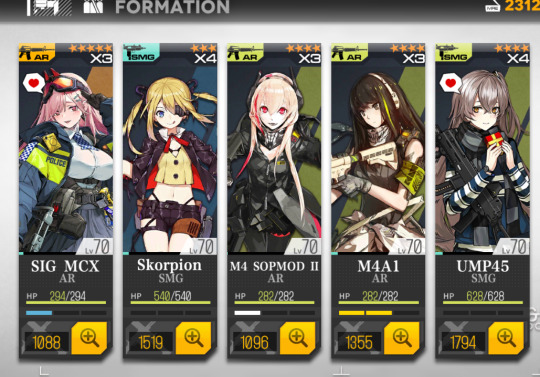
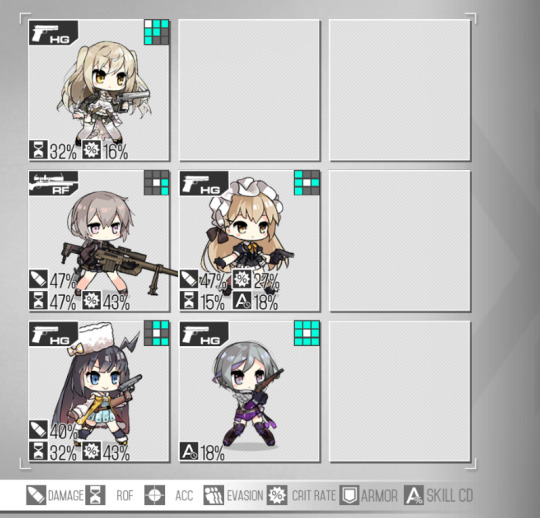
First eschalon is good, it's the standard one that everyone seems to use to clear the early game. This second one is a WIP mess that I'm readying for night missions. You see, I'm really hurting for half-decent SMGs and rifles, the second one there is kinda lacking in defense/fire power... I wanna create a decent second eschalon and night mission groupie but I gotta figure out what units to invest in. I hope for Carcano soon. She is cute. Also, feel free to berate me for my bad decisions and suggest decent compositions. I am so lacking in SMGs that dont immediately explode (mpk you are so cute but so stupid). I'm currently looking at friend's compositions to figure out what formations work...
In completely different news and only further proving how dense I am, I only recently learned that Girl of the Bakehouse was related to GFL. I've had my eye on Reverse Collapse for a while now since it's a remake (of a remake?! I didnt play the previous one) of a visual novel I played in 2012 or so. The original vn was made in 2009 in like Kirikiri script and I was a young lad very fixated on all things with girls and guns (Gunslinger Girl was and still is a favorite of mine, I would've read it one summer at my Uncle's out on the front porch). There's an english patch now, but back then it was only in Chinese so I had to use text extracting and image translators, looking up the characters as I went. I got a cup of coco and opened up a patched version last night for old times sake. It's clearly a doujin work with those rough edges but it's so damn confident in its presentation you can't not get swept up in the presentation. The sound work make it very immersive. I highly reccomend reading it if you want a solid, emotional war story. Looking at the sepia soaked sketches, down-to-earth narrative, dense wordbuilding and general war otaku sentimentality... It really predicted a lot of my tastes, huh... 😅
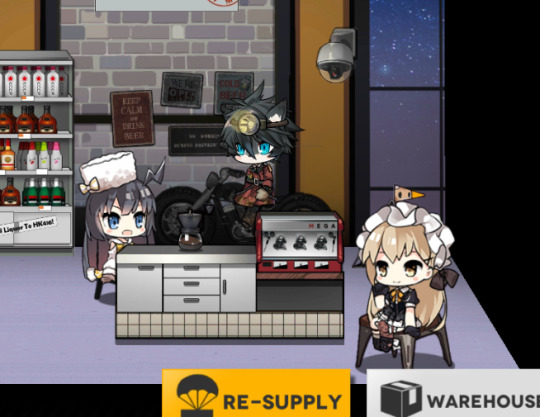
Behold, teh wolfguy...
Back to work. Logistics still running. I can and WILL continue being stupid. The nostalgia is really strong, I'm tempted to draw fanart despite the sour memories of the past. Again, please berate me and tell me of your team compositions. I think my ID is 772030 but I promise you, I won't be any good on teh battlefield 😇 this machine runs off hopes and dreams, not realities!
#chipco on the frontline#gfl#girl's frontline#sorry im such an idiot#also what the hell gfl 2#i will be seated#girl of the bakehouse#game diary
3 notes
·
View notes
Text
Why Generative AI Platform Development is the Next Big Thing in Software Engineering and Product Innovation
In just a few years, generative AI has moved from being an experimental technology to a transformative force that’s reshaping industries. Its ability to create text, images, code, audio, and even entire virtual environments is redefining the limits of what software can do. But the real paradigm shift lies not just in using generative AI—but in building platforms powered by it.

This shift marks the dawn of a new era in software engineering and product innovation. Here's why generative AI platform development is the next big thing.
1. From Tools to Ecosystems: The Rise of Generative AI Platforms
Generative AI tools like ChatGPT, Midjourney, and GitHub Copilot have already proven their value in isolated use cases. However, the real potential emerges when these capabilities are embedded into broader ecosystems—platforms that allow developers, businesses, and users to build on top of generative models.
Much like cloud computing ushered in the era of scalable services, generative AI platforms are enabling:
Custom model training and fine-tuning
Integration with business workflows
Extensible APIs for building apps and services
Multimodal interaction (text, vision, speech, code)
These platforms don’t just offer one feature—they offer the infrastructure to reimagine entire categories of products.
2. Accelerated Product Development
Software engineers are increasingly adopting generative AI to speed up development cycles. Platforms that include AI coding assistants, auto-documentation tools, and test generation can:
Reduce boilerplate work
Identify bugs faster
Help onboard new developers
Enable rapid prototyping with AI-generated code or designs
Imagine a product team that can go from concept to MVP in days instead of months. This compression of the innovation timeline is game-changing—especially in competitive markets.
3. A New UX Paradigm: Conversational and Adaptive Interfaces
Traditional user interfaces are built around buttons, forms, and static flows. Generative AI platforms enable a new kind of UX—one that’s:
Conversational: Users interact through natural language
Context-aware: AI adapts to user behavior and preferences
Multimodal: Inputs and outputs span voice, image, text, video
This empowers entirely new product categories, from AI copilots in enterprise software to virtual AI assistants in healthcare, education, and customer service.
4. Customization at Scale
Generative AI platforms empower companies to deliver hyper-personalized experiences at scale. For example:
E-commerce platforms can generate product descriptions tailored to individual customer profiles.
Marketing tools can draft emails or campaigns in a brand’s tone of voice for specific segments.
Education platforms can create adaptive learning content for each student.
This ability to generate tailored outputs on-demand is a leap forward from static content systems.
5. Empowering Developers and Non-Technical Users Alike
Low-code and no-code platforms are being transformed by generative AI. Now, business users can describe what they want in plain language, and AI will build or configure parts of the application for them.
Meanwhile, developers get "superpowers"—they can focus on solving higher-order problems while AI handles routine or repetitive coding tasks. This dual benefit is making product development more democratic and efficient.
6. New Business Models and Monetization Opportunities
Generative AI platforms open doors to new business models:
AI-as-a-Service: Charge for API access or custom model hosting
Marketplace ecosystems: Sell AI-generated templates, prompts, or plug-ins
Usage-based pricing: Monetize based on token or image generation volume
Vertical-specific solutions: Offer industry-tailored generative platforms (e.g., legal, finance, design)
This flexibility allows companies to innovate not only on the tech front but also on how they deliver and capture value.
Conclusion
Generative AI platform development isn’t just another tech trend. It’s a foundational shift—comparable to the rise of the internet or cloud computing. By building platforms, not just applications, forward-looking companies are positioning themselves to lead the next wave of product innovation.
For software engineers, product managers, and entrepreneurs, this is the moment to explore, experiment, and build. The tools are here. The models are mature. And the possibilities are nearly limitless.
0 notes
Text
How to Choose the Right Crypto Token Development Company

So, you've got this killer idea for a blockchain project and now you're thinking, “How do I turn this into a token that people can actually use?” Welcome to the world of crypto token development. But here’s the catch — choosing the right development partner can make or break your project.
Let’s break it all down so you can find the right crypto token development company that aligns with your vision.
1. Understanding Crypto Token Development
What is a Crypto Token?
A crypto token is a digital asset created on an existing blockchain. Unlike coins (like Bitcoin or Ethereum), tokens don’t have their own blockchain — they ride on top of another network like Ethereum or Binance Smart Chain.
These tokens can represent anything from currency and voting rights to real-world assets.
Different Types of Crypto Tokens
You’ve got:
Utility Tokens (used inside a platform)
Security Tokens (backed by real assets or profits)
Governance Tokens (voting power in DAOs)
NFTs (non-fungible and unique)
The type of token you want determines the kind of development support you need.
2. Why You Need a Token Development Company
Complexity of Blockchain Development
Blockchain is not just coding. It’s about smart contracts, consensus algorithms, cryptographic security, and decentralized architectures. One mistake in your token's code could cost you millions — and your reputation.
Value of Hiring Experts
An expert token development company understands how to:
Write flawless smart contracts
Ensure your token is secure and efficient
Help you with marketing and tokenomics
It’s like hiring a seasoned architect instead of drawing up blueprints yourself.
3. Define Your Project Requirements First
Know Your Token Type and Purpose
Before hunting for a company, get super clear on what you want:
Are you creating a DeFi token?
Is it an NFT for gaming?
Will your token have governance rights?
This clarity helps you filter out companies that aren’t specialized in what you need.
Set Clear Goals and Expectations
List your deliverables:
Token standard (ERC-20? BEP-20?)
Timeline
Budget
Launch platforms
The clearer your vision, the better your chances of hiring the right team.
4. Experience and Expertise Matter
Years in Blockchain Industry
Always ask: “How long have you been in the blockchain space?”
Companies like Shamla Tech or LeewayHertz have been around for years and know the ins and outs of token development.
Specialization in Specific Blockchain Networks
Some developers specialize in:
Ethereum (ERC-20, ERC-721)
Binance Smart Chain (BEP-20)
Solana or Polygon
Pick someone who speaks your blockchain language fluently.
5. Technical Capabilities to Look For
Smart Contract Development
Smart contracts are the backbone of your token. A single vulnerability can lead to exploits. The company should:
Use best practices
Run unit tests
Optimize for gas efficiency
Token Standards Like ERC-20, BEP-20, TRC-20
Make sure they’ve built tokens in the standard you’re targeting. If not, you’re probably working with a generalist — not a pro.
6. Check Their Portfolio and Case Studies
Real-World Projects
Any legit company should show off past work:
Token name
Blockchain used
Live stats if available
If they can’t — that’s a red flag.
Success Metrics and Performance
Did the token:
Launch successfully?
Raise capital?
Get listed on exchanges?
Case studies reveal their ability to deliver on real goals.
7. Reputation in the Crypto Community
Reviews and Ratings
Check platforms like:
Clutch
Trustpilot
G2
Look for reviews from real clients.
Community Presence and Social Proof
Are they active on:
LinkedIn?
Twitter?
GitHub?
A silent developer in a loud industry? Not a great sign.
8. Security Standards and Audit Practices
Smart Contract Audits
Ask if they include third-party audits (like CertiK or Hacken). A good token development company will never ship code without a thorough audit.
Security Protocols and Testing
They should follow best practices like:
Penetration testing
Multi-sig wallets
Timelocks
9. Regulatory Compliance Knowledge
Understanding Global Crypto Laws
Different regions = different laws. Your dev team should know the basics of:
SEC (USA)
ESMA (Europe)
FATF compliance
KYC/AML Integration Knowledge
If your token involves finance or fundraising, KYC and AML are non-negotiables.
10. Customization and Scalability Options
Flexibility in Features
Can they build custom tokenomics, staking, governance, or burns? Or are they just reskinning templates?
Planning for Growth and Mass Adoption
Your token should support future:
DApp integrations
Layer-2 scaling
Cross-chain bridges
11. Transparency and Communication
Clear Reporting and Updates
You need weekly updates. Period. No ghosting. The right company will keep you in the loop.
Dedicated Project Managers
One point of contact, not 10 developers replying at odd hours.
12. Costing and Budget Alignment
Understanding Pricing Models
Some go fixed-price, others by milestones. Understand:
What’s included?
Are there hidden fees?
What happens after launch?
Getting Value for Money
Don’t go too cheap. Good development isn’t cheap, and cheap development isn’t good.
13. Post-Launch Support and Maintenance
Bug Fixing and Updates
Expect glitches. Make sure they’ll help you squash bugs fast.
Future Upgrades and Improvements
Your token should evolve. Get a team that sticks around for the long haul.
14. Evaluate Their Tech Stack and Tools
Preferred Programming Languages
Ask about:
Solidity
Rust (for Solana)
Vyper
Python
Integration With DeFi, NFT, and More
Can they link your token with:
DEXs?
Liquidity pools?
NFT marketplaces?
If yes, you’ve got a full-stack dev team. Nice!
15. Choosing Between Freelancers vs. Established Companies
Pros and Cons of Both
Freelancers:
✅ Cheaper
❌ Less reliable
Companies:
✅ More resources
❌ Cost more
When to Go for Which Option
If you're building a long-term project, choose a company. If it’s a simple one-off token, a skilled freelancer might do.
Conclusion
Choosing a crypto token development company is not just a technical decision — it’s strategic. From your project’s success to your users’ trust, everything rides on the quality of your token and the brains behind it.
Do your homework. Ask tough questions. Pick a partner, not just a provider. Because in crypto, execution is everything.
FAQs
1. How long does it take to develop a crypto token?
Most simple tokens can be created in 1–2 weeks. Complex DeFi or NFT tokens can take 1–2 months or more.
2. What’s the difference between a coin and a token?
A coin has its own blockchain (like Bitcoin), while a token is built on top of an existing blockchain (like ERC-20 on Ethereum).
3. Can I launch a token without coding knowledge?
Yes! That’s what development companies are for. But you should understand the basics so you’re not flying blind.
4. How much does token development cost?
It ranges from $2,000 to $50,000+ depending on features, audits, and custom work.
5. What are some red flags when choosing a development company?
No portfolio
No smart contract audits
Vague pricing
Poor communication
#CryptoTokenDevelopment#CreateACryptoToken#HowToCreateACryptoToken#BuildYourOwnCryptoToken#LaunchYourCryptoToken#ShamlaTech
0 notes
Text
9 Mistakes to Avoid When Learning Web3 Development
As the demand for Web3 development continues to rise in 2025, more developers are exploring this exciting new world of decentralized technologies. However, Web3 is not just another coding skill—it requires a shift in mindset, architecture, and tools.

Whether you're new to blockchain or transitioning from Web2, avoiding common mistakes early can save you time, frustration, and even money. In this article, we’ll break down 9 common mistakes to avoid when learning Web3 development, along with practical advice to get ahead.
1. Skipping Blockchain Fundamentals
Many developers jump straight into coding smart contracts without truly understanding how blockchains work. A solid grasp of consensus mechanisms, transaction flow, gas fees, and blocks is essential.
If you don’t understand the system you’re building on, you’ll likely introduce security flaws or build inefficient applications.
2. Neglecting Smart Contract Security
One of the most critical areas in Web3 development services is smart contract security. Vulnerabilities like reentrancy attacks, integer overflows, or improper access control can cause major losses.
Before deploying anything live:
Study secure development practices
Use auditing tools like Slither or MythX
Learn from past exploit case studies
3. Focusing Only on Ethereum
Ethereum is popular, but it’s not the only chain. Developers should also explore other ecosystems like:
Polygon (Layer 2 scaling)
Solana (high throughput)
BNB Chain
Arbitrum and Optimism (Layer 2 rollups)
Modern Web3 development companies work across multiple chains to optimize performance, fees, and user experience.
4. Ignoring Web2 Skills
Many newcomers believe Web3 requires abandoning traditional web skills. In reality, you still need:
HTML/CSS
JavaScript frameworks like React or Next.js
API integration
A great dApp still needs a solid UI. Web3 solutions that ignore frontend development often end up with poor usability.
5. Not Testing Thoroughly
Failing to test smart contracts and dApps properly is a costly mistake. You should use testnets (like Sepolia, Mumbai, or Fuji) and automated testing tools to catch bugs early.
Use:
Hardhat
Foundry
Truffle
Ganache
Testing is standard practice for every successful Web3 development agency.
6. Underestimating Gas Fees
Gas fees on chains like Ethereum can fluctuate wildly. Writing inefficient code can lead to high execution costs for users.
Web 3.0 developers should optimize smart contracts and understand gas estimation to keep dApps affordable.
7. Not Understanding Token Standards
A good Web 3.0 development company should be familiar with:
ERC-20 (fungible tokens)
ERC-721 (NFTs)
ERC-1155 (multi-token standard)
Knowing when and how to use each standard is essential to creating interoperable Web3 platforms.
8. Skipping Documentation and Community Resources
The Web3 space evolves rapidly. Developers who don’t read documentation or participate in developer forums fall behind quickly.
Stay active on GitHub, Discord, and follow official docs for tools like Ethers.js, Web3.js, and The Graph.
9. Building Without Real-World Use Cases
Many developers jump into projects without solving real problems. Building “just another NFT site” with no unique value won’t succeed.
Study existing Web3 development services and identify how to innovate. Whether it’s finance, gaming, social media, or supply chains—every great project starts with a meaningful problem.
Final Thoughts
Learning Web3 development is rewarding, but it comes with its challenges. By avoiding these 9 common mistakes, you’ll set yourself up for long-term success in the decentralized space.
At Nadcab Labs, we guide startups and enterprises through successful blockchain implementation. Our experienced Web 3.0 developers and security-first mindset ensure that your project is built the right way from the start.
Whether you're building a dApp, NFT platform, or DeFi protocol, we’re here to help.
Visit us here for more:- https://www.nadcab.com/web3-development-services
Get more Blockchain and Web3 Insights with Nadcab Labs
Twitter - twitter.com/nadcablabs
LinkedIn - linkedin.com/company/nadcablabs
Facebook- facebook.com/nadcablabs
Instagram- instagram.com/nadcablabs
YouTube- www.youtube.com/@nadcablabs
#blockchain#technology#web3developmentcompany#Web3DevelopmentServices#Web3Solutions#Web3Development#Web3.0Development#Web3.0DevelopmentServices#web3.0solutions#Web3.0DevelopmentCompany#Web3developmentagency#Web3.0developer
0 notes
Text
Unlock Your Career in Full-Stack Development with Techmindz's Full-Stack JavaScript Course in Kochi
JavaScript is undeniably the heart of modern web development. As a versatile and powerful language, it allows developers to build both the front-end and back-end of web applications using a single language. If you’re eager to dive deep into full-stack development and master JavaScript, Techmindz offers the perfect learning opportunity with our Full-Stack JavaScript Course in Kochi. This course will equip you with the essential skills to become a proficient JavaScript developer and build dynamic, interactive, and scalable web applications.
Why Learn Full-Stack JavaScript?
The demand for full-stack JavaScript developers is rapidly increasing across industries, and it’s no surprise why. With the ability to use JavaScript for both the client-side (front-end) and server-side (back-end), full-stack JavaScript developers are able to streamline development, reduce project complexity, and create end-to-end solutions using one programming language. Mastering the entire stack of JavaScript technologies opens doors to exciting job opportunities and career growth.
What Makes Techmindz's Full-Stack JavaScript Course Stand Out?
At Techmindz, we understand the need for comprehensive, hands-on training to master full-stack JavaScript development. Our course is designed to provide you with in-depth knowledge and practical experience in both front-end and back-end JavaScript technologies, including Node.js, Express.js, MongoDB, and React.js. Through expert-led instruction, real-world projects, and interactive coding sessions, you will become fully equipped to handle the entire development process—from building user interfaces to designing databases and developing server-side logic.
What You Will Learn in Our Full-Stack JavaScript Course
Front-End Development with JavaScript:
HTML & CSS: Learn the building blocks of web development, creating responsive and user-friendly web pages.
JavaScript Basics: Master JavaScript fundamentals, including variables, loops, functions, and objects.
React.js: Dive into the world of React, one of the most popular JavaScript libraries, to build dynamic and efficient user interfaces.
State Management with Redux: Learn how to manage application state in large-scale React applications using Redux.
Asynchronous JavaScript: Master concepts like promises, async/await, and AJAX for handling asynchronous operations and API interactions.
Back-End Development with JavaScript:
Node.js: Learn how to use Node.js to build scalable, high-performance server-side applications.
Express.js: Understand how to work with Express.js to streamline routing and simplify server-side logic.
MongoDB: Master MongoDB, a NoSQL database that works seamlessly with JavaScript applications to store and manage data.
RESTful APIs: Learn to design and develop RESTful APIs that allow communication between the front-end and back-end of applications.
Authentication & Authorization: Implement secure user authentication and authorization mechanisms using technologies like JWT (JSON Web Tokens).
Additional Topics:
Version Control with Git & GitHub: Learn the importance of version control and how to use Git and GitHub for collaboration and code management.
Testing and Debugging: Master tools like Mocha and Chai for unit testing and debugging your JavaScript applications.
Deployment: Gain hands-on experience deploying your full-stack applications to cloud platforms like Heroku and AWS.
Agile Development: Understand Agile development principles to work efficiently in teams and manage projects effectively.
Why Choose Techmindz for Full-Stack JavaScript Training?
Experienced Trainers: Our instructors are industry experts with years of experience in JavaScript development, ensuring that you receive the most relevant and up-to-date knowledge.
Project-Based Learning: At Techmindz, we focus on practical, hands-on learning. You will work on real-world projects to build a strong portfolio that showcases your full-stack JavaScript skills.
Comprehensive Curriculum: The course is designed to cover every aspect of full-stack JavaScript development, from front-end technologies to back-end frameworks.
Flexible Learning Options: Whether you prefer classroom training or online classes, we offer flexible learning options to accommodate your schedule.
Job Placement Assistance: We provide placement support to help you land your dream job after completing the course. This includes resume building, interview preparation, and job referrals.
Affordable Pricing: Get top-tier training at competitive prices, ensuring you get the best value for your investment.
Who Should Enroll in the Full-Stack JavaScript Course?
Our Full-Stack JavaScript Course in Kochi is ideal for:
Beginner Developers: If you're new to web development and want to learn how to build complete web applications using JavaScript.
Front-End Developers: If you already have experience with front-end technologies like HTML, CSS, and JavaScript and want to expand your skills to the back-end.
Back-End Developers: If you’re familiar with server-side development and want to transition to full-stack JavaScript development.
IT Professionals & Freelancers: Developers looking to enhance their skill set and offer full-stack JavaScript development services to clients.
Entrepreneurs: Individuals looking to build and scale their own web applications.
Career Opportunities After Completing the Course
Upon completing the Full-Stack JavaScript Course in Kochi, you will be equipped to take on roles such as:
Full-Stack JavaScript Developer
Front-End Developer (React.js/Node.js)
Back-End Developer (Node.js/Express.js)
Web Developer
JavaScript Developer
API Developer
With JavaScript being the most widely used programming language for web development, the demand for full-stack JavaScript developers is higher than ever. By completing this course, you'll be well-prepared to take advantage of numerous job opportunities in the web development industry.
Why Full-Stack JavaScript Development is in Demand?
The power of JavaScript lies in its versatility. As a full-stack JavaScript developer, you’ll have the ability to build web applications entirely using JavaScript, which simplifies the development process and boosts productivity. With the rise of modern web applications and the growth of technologies like React, Node.js, and MongoDB, JavaScript developers are in high demand, making this the perfect time to invest in your skills.
Get Started Today with Techmindz's Full-Stack JavaScript Course in Kochi
If you're ready to start your journey toward becoming a proficient full-stack JavaScript developer, Techmindz is the place to be. Our Full-Stack JavaScript Course in Kochi will provide you with the knowledge, skills, and experience necessary to excel in the tech industry.
https://www.techmindz.com/java-programming-course-kochi-infopark/
0 notes
Text
Alltick API vs. Traditional Data Feeds: Why Milliseconds Matter in Modern Trading
In financial markets, speed is everything. A 15-minute delay in market data isn’t just an inconvenience — it’s a competitive disadvantage that can cost traders millions. While traditional data feeds leave traders reacting to stale information, Alltick API delivers real-time, zero-latency market data across stocks, forex, futures, and cryptocurrencies.
This article explores: ✔ The hidden costs of delayed data ✔ How Alltick eliminates latency ✔ Real-world case studies proving its superiority
The High Cost of Delayed Data
Most free or retail trading platforms rely on delayed data feeds (often 15 minutes behind real-time). This creates several problems:
1. Missed Arbitrage Opportunities
Arbitrage relies on price discrepancies between markets.
A 15-minute lag means opportunities vanish before traders can act.
Example: A crypto arbitrage bot using delayed data misses a 2% spread between exchanges — resulting in 200Klostper200Klostper10M trade.
2. Inefficient Risk Management
Delayed data means outdated volatility readings.
Traders may over-leverage based on old prices, leading to margin calls.
3. Poor Algorithm Performance
High-frequency trading (HFT) algorithms depend on microsecond precision.
A 500ms delay can turn a profitable strategy into a loss-making one.
How Alltick Solves the Latency Problem
Alltick API streams live market data directly from 100+ global exchanges (NYSE, CME, Coinbase, etc.) with:
✔ Zero-Latency Feeds
WebSocket & REST APIs for real-time price updates.
Microsecond timestamps for ultra-precise execution.
✔ Multi-Source Validation
Cross-checks 12 independent data feeds to eliminate errors.
Uses statistical consensus (4.5σ confidence) to filter outliers.
✔ Self-Healing Data Pipeline
Auto-corrects 93% of transmission errors in real-time.
Reconstructs 81% of missing OTC ticks using AI interpolation.
import json import websocket # pip install websocket-client ''' # Special Note: # GitHub: https://github.com/alltick/realtime-forex-crypto-stock-tick-finance-websocket-api # Token Application: https://alltick.co # Replace "testtoken" in the URL below with your own token # API addresses for forex, cryptocurrencies, and precious metals: # wss://quote.tradeswitcher.com/quote-b-ws-api # Stock API address: # wss://quote.tradeswitcher.com/quote-stock-b-ws-api ''' class Feed(object): def __init__(self): self.url = 'wss://quote.tradeswitcher.com/quote-stock-b-ws-api?token=testtoken' # Enter your websocket URL here self.ws = None def on_open(self, ws): """ Callback object which is called at opening websocket. 1 argument: @ ws: the WebSocketApp object """ print('A new WebSocketApp is opened!') # Start subscribing (an example) sub_param = { "cmd_id": 22002, "seq_id": 123, "trace":"3baaa938-f92c-4a74-a228-fd49d5e2f8bc-1678419657806", "data":{ "symbol_list":[ { "code": "700.HK", "depth_level": 5, }, { "code": "UNH.US", "depth_level": 5, } ] } } # If you want to run for a long time, you need to modify the code to send heartbeats periodically to avoid disconnection, please refer to the API documentation for details sub_str = json.dumps(sub_param) ws.send(sub_str) print("depth quote are subscribed!") def on_data(self, ws, string, type, continue_flag): """ 4 arguments. The 1st argument is this class object. The 2nd argument is utf-8 string which we get from the server. The 3rd argument is data type. ABNF.OPCODE_TEXT or ABNF.OPCODE_BINARY will be came. The 4th argument is continue flag. If 0, the data continue """ def on_message(self, ws, message): """ Callback object which is called when received data. 2 arguments: @ ws: the WebSocketApp object @ message: utf-8 data received from the server """ # Parse the received message result = eval(message) print(result) def on_error(self, ws, error): """ Callback object which is called when got an error. 2 arguments: @ ws: the WebSocketApp object @ error: exception object """ print(error) def on_close(self, ws, close_status_code, close_msg): """ Callback object which is called when the connection is closed. 2 arguments: @ ws: the WebSocketApp object @ close_status_code @ close_msg """ print('The connection is closed!') def start(self): self.ws = websocket.WebSocketApp( self.url, on_open=self.on_open, on_message=self.on_message, on_data=self.on_data, on_error=self.on_error, on_close=self.on_close, ) self.ws.run_forever() if __name__ == "__main__": feed = Feed() feed.start()
Case Study: Quant Fund Boosts Returns by 62.3%
A quantitative hedge fund switched from traditional feeds to Alltick API and saw: ✅ 62.3% improvement in backtest accuracy (P-value <0.001) ✅ 470ms faster arbitrage detection ✅ Reduced maximum drawdown prediction error to ±0.3%
Conclusion: Why Real-Time Data is Non-Negotiable
In today’s markets, milliseconds = millions. Alltick API ensures you’re not just keeping up — you’re staying ahead.
Ready to eliminate latency? [Start Alltick.co today.]
0 notes
Text
The Definitive Blueprint for Aspiring Full Stack Web Developers
Embarking on a career as a full stack web developer is an exciting journey filled with endless possibilities. Full stack developers are equipped to handle both the frontend and backend aspects of web applications, making them invaluable in the tech industry. This blog serves as your definitive blueprint, guiding you through the essential skills and steps needed to achieve success in this field.
For those looking to enhance their skills, Full Stack Developer Course Online programs offer comprehensive education and job placement assistance, making it easier to master this tool and advance your career.
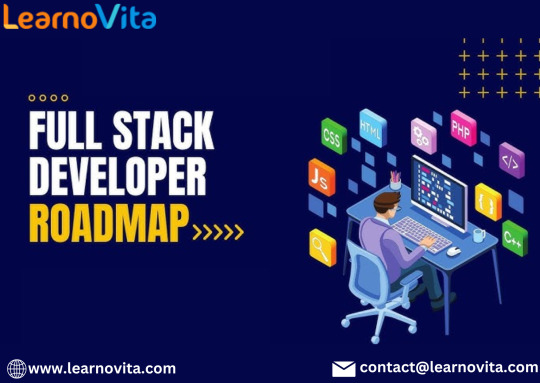
Step 1: Lay the Groundwork
Master HTML & CSS
Start by learning the foundational technologies of the web:
HTML (HyperText Markup Language): Understand how to structure web content using various elements and tags. Familiarize yourself with semantic HTML to improve accessibility and SEO.
CSS (Cascading Style Sheets): Learn to style your web pages effectively. Focus on layout techniques, color schemes, typography, and responsive design principles.
Get Comfortable with JavaScript
JavaScript: This powerful scripting language is essential for adding interactivity to your web applications. Concentrate on:
Variables, data types, and operators
Control structures (if statements, loops)
Functions, scope, and DOM manipulation for dynamic content
Step 2: Strengthen Your Frontend Skills
Deepen Your JavaScript Knowledge
ES6 and Modern Features: Become proficient in newer JavaScript features such as arrow functions, destructuring, template literals, and modules.
Explore Frontend Frameworks
React: Dive into this popular library for building user interfaces. Understand components, state management, and hooks.
Alternative Frameworks: Consider learning Vue.js or Angular to broaden your perspective on frontend development.
Responsive Design Practices
Learn how to create mobile-friendly applications using responsive design techniques. Frameworks like Bootstrap or Tailwind CSS can expedite your design process.
Version Control with Git
Git: Familiarize yourself with version control systems. Learn to track changes in your code and collaborate using platforms like GitHub.
Step 3: Transition to Backend Development
Learn Server-Side Technologies
Node.js: Get to know this JavaScript runtime for server-side programming. Understand its architecture and how to build scalable applications.
Express.js: Learn this framework for Node.js that simplifies the creation of robust APIs and web applications.
Database Management
SQL Databases: Start with relational databases like PostgreSQL or MySQL. Learn how to write queries and manage data effectively.
NoSQL Databases: Explore MongoDB for handling unstructured data, and understand when to use NoSQL versus SQL.
API Development
Master the principles of RESTful API design. Learn to create and consume APIs using HTTP methods and status codes.
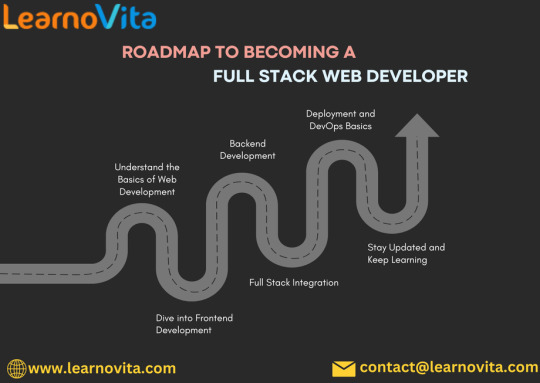
With the aid of Best Online Training & Placement programs, which offer comprehensive training and job placement support to anyone looking to develop their talents, it’s easier to learn this tool and advance your career.
Step 4: Full Stack Integration
Build Complete Applications
Combine your frontend and backend skills to create full stack projects. Ideas include:
A personal blog or portfolio site
A task management application
An e-commerce store
Implement User Authentication
Learn to secure your applications by implementing user authentication and authorization. Explore techniques such as JWT (JSON Web Tokens) and OAuth.
With the aid of Best Online Training & Placement programs, which offer comprehensive training and job placement support to anyone looking to develop their talents, it’s easier to learn this tool and advance your career.
Step 5: Deployment and DevOps Fundamentals
Deploy Your Applications
Understand the deployment process using platforms like Heroku, Vercel, or AWS. Learn how to configure your applications for production environments.
Basic DevOps Knowledge
Familiarize yourself with key DevOps practices, including Continuous Integration/Continuous Deployment (CI/CD) and containerization with Docker.
Step 6: Engage with the Community and Continuous Learning
Join Online Developer Communities
Connect with fellow developers through forums such as Stack Overflow, Reddit, or Discord. Engaging with a community can provide support, resources, and networking opportunities.
Stay Current
Follow blogs, podcasts, and YouTube channels dedicated to web development. Continuous learning is vital in this fast-paced industry.
Create a Professional Portfolio
Build a portfolio showcasing your projects, skills, and experiences. Highlight your best work to attract potential employers and clients.
Conclusion
The path to becoming a full stack web developer is filled with challenges and opportunities for growth. By following this definitive blueprint, you can equip yourself with the skills and knowledge needed to thrive in this dynamic field. Embrace the learning journey, stay curious, and enjoy the process of becoming a skilled developer
0 notes
Text
CircleCI is a continuous integration and delivery platform that helps organizations automate application delivery with faster builds and simplified pipeline maintenance. CircleCI in particular offers the ability to automate testing during the CI/CD process as part of their daily team habits.CircleCI jobs require secrets in order to pull code from Git repo (e.g. GitHub token) and for installing this code on a newly defined environment (e.g. CSP credentials - access key). By integrating CircleCI with Akeyless Vault, you would not need to keep hard coded secrets within the CircleCI jobs such as API-keys, tokens, certificates and username & password credentials.With an Akeyless Vault integration to CircleCI, Akeyless acts as a centralized secrets management platform by efficiently provisioning user secrets into CircleCI jobs. Akeyless handles secret provisioning through injecting Static or Dynamic Keys into CircleCI jobs. While doing so, Akeyless leverages existing CircleCI functionalities such as jobs, workflows, contexts, in order to securely fetch secrets to CircleCI pipelines. Benefits of Using a Centralized Secrets Management SolutionWith a centralized secrets management platform like Akeyless Vault, CircleCI and all other DevOps tool’s secrets are unified and secured. A secrets management platform like the Akeyless Vault makes it operationally simpler to maintain compliance and generate secret access reports with a usage visibility of what secret, when accessed, and from where.Operation-Wise - For an organization with multiple DevOps tools, managing secrets becomes complicated and requires considerable effort to maintain workforce efficiency. With a holistic secrets management platform like Akeyless, an organization maintains a single source of secrets into different DevOps applications and workflows simultaneously.Audit-Wise - With a consolidated audit of all application secrets directly through the Akeyless Vault, an organization can ensure audit compliance centrally instead of auditing multiple secret repositories. Functionality-Wise - Most DevOps tools, including CircleCI, lack the Zero-Trust strategy while administering secrets. A centralized secrets management solution like Akeyless, secrets are generated on-the-fly to fetch into CircleCI jobs Just-in-Time, thereby aiding a Zero-Trust posture.Security-Wise - Through Akeyless, CircleCI job secrets are provisioned through Static and Dynamic Keys instead of the default way of storing secrets as plain text. Additionally, with automatic expiry of SSH Certificates, Akeyless avoids abuse and theft of access privileges. How to Fetch a Secret with Akeyless Vault in CircleCIWith benefits like ease of operation and enhanced security allowed by Akeyless Vault's centralized secrets management platform, let’s go through the simple steps to fetch a secret in CircleCI.Prerequisites1.You need to have an existing repo that is followed by CircleCI (in our example it’s named TestRepo):2. Sign In or create an account with Akeyless (it’s free) by accessing the URL: https://console.akeyless.io/register 3. In case you are a new user, create your first secret in Akeyless as shown below: Configuration1. Setup global configuration in your CircleCI projecta. Go into Project Settings:b. Go into Environment Variables to setup global configuration:In our example, you would need to configure the following environment variables:· api_gateway_url· admin_email· admin_passwordIf you have your own Akeyless API Gateway setup - set the URL for the Restful API, otherwise you can use Akeyless Public API Gateway with the following URL:https://rest.akeyless.io Similarly, set your admin_email and admin_password as environment variables: 2. Create/update your config.yml file for CircleCI (should be in .circleci/config.yml): 3. Pipeline will be triggered and you'll be able to view your build:To Sum Up With the Akeyless Vault plugin for CircleCI, an
organization can manage CircleCI secrets effortlessly, cutting down operational hassles in addition to maintaining security. With the use of Static or Dynamic secrets, access policies are efficiently permission-controlled across multiple layers of a DevOps workflow.
0 notes
Text
```markdown
Blockchain Ranking API: Revolutionizing the Way We Measure Success
In the ever-evolving landscape of blockchain technology, measuring the success and impact of different projects has become increasingly complex. With a multitude of metrics to consider, from transaction volume to community engagement, it's challenging for both developers and investors to get a clear picture of which projects are truly making a difference. Enter the Blockchain Ranking API—a powerful tool designed to simplify this process and provide a comprehensive overview of blockchain project performance.
The Need for Standardization
Before diving into the specifics of the Blockchain Ranking API, it's important to understand why standardization in blockchain metrics is so crucial. Each blockchain project operates on its own unique set of rules and protocols, making direct comparisons difficult. By providing a standardized framework for evaluating these projects, the Blockchain Ranking API helps eliminate confusion and provides a clear benchmark for assessing performance.
How It Works
The Blockchain Ranking API leverages a variety of data points to rank projects, including but not limited to:
Transaction Volume: A measure of the total number of transactions processed over a given period.
Community Engagement: Metrics such as social media mentions, forum activity, and GitHub contributions.
Developer Activity: An assessment of how active the development team is, including code commits and bug fixes.
Market Capitalization: The total value of all tokens or coins in circulation.
By aggregating these data points, the API generates a score that reflects the overall health and potential of each project. This score is then used to create a ranking system, allowing users to quickly identify top performers.
Benefits for Users
Whether you're a developer looking to build on a robust platform or an investor searching for promising projects, the Blockchain Ranking API offers several key benefits:
Time-Saving: No need to manually gather and analyze data from multiple sources.
Transparency: All data sources are clearly documented, ensuring transparency in the ranking process.
Actionable Insights: The rankings provide actionable insights that can inform strategic decisions.
Potential for Growth
As blockchain technology continues to evolve, the need for tools like the Blockchain Ranking API will only increase. By providing a standardized way to evaluate projects, this API not only helps current users make informed decisions but also sets the stage for future innovations in the space.
Conclusion
The Blockchain Ranking API represents a significant step forward in the world of blockchain evaluation. By offering a standardized, transparent, and comprehensive approach to ranking projects, it empowers users to make more informed decisions and drives the industry towards greater accountability and innovation. As we look to the future, tools like this will be essential in shaping the direction of blockchain technology.
What do you think about the importance of standardization in blockchain metrics? Share your thoughts and experiences in the comments below!
```
加飞机@yuantou2048

谷歌霸屏
EPP Machine
0 notes
Text
Introducing Derad Network: The Future of Decentralized Air Traffic Data

Derad Network is transforming how air traffic data is shared by creating a decentralized marketplace powered by blockchain technology. By leveraging a network of miners who set up ground stations to capture real-time ADS-B (Automatic Dependent Surveillance–Broadcast) data, the platform ensures a more open, efficient, and secure system for tracking flights globally. This data—containing crucial details like aircraft position, altitude, and velocity—is essential for aviation safety, route optimization, and logistics planning. Traditionally, access to such data has been limited to centralized authorities, but Derad Network democratizes it, making it accessible to airlines, logistics companies, and air traffic controllers in a secure and verifiable way.
A key innovation of Derad Network is its decentralized marketplace, where data providers (miners) and buyers (such as airlines and logistics firms) interact on a blockchain-powered platform. This ensures data integrity, transparency, and traceability, allowing organizations to make informed decisions in real time. Miners who contribute data are rewarded with DRD tokens, creating a fair and sustainable ecosystem that incentivizes participation. The more data a miner provides, the greater their reward, fostering continuous growth of the network.
The use cases of Derad Network are extensive. Airlines can optimize flight paths to improve efficiency and reduce fuel consumption, while logistics companies can track cargo movements in regions lacking traditional radar coverage. Additionally, air traffic controllers gain access to more comprehensive data, enhancing situational awareness and aviation safety. This decentralized approach ensures cost-effective air traffic management, scalability to meet the demands of growing air travel, and improved airspace utilization.
By opening participation to anyone with a compatible ground station, Derad Network fosters a truly global, community-driven infrastructure for air traffic monitoring. Whether you’re an aviation professional, tech enthusiast, or data provider, you can contribute to and benefit from this innovative ecosystem. Join Derad Network today and be part of the next generation of air traffic management!
Official links:
X: x.com/deradnet
Website: https://www.derad.net/
Medium: medium.com/@deradnetwork
Telegram: t.me/deradnet
Github: github.com/deradnet
1 note
·
View note
Text
Automating Deployments with GitHub Actions and Terraform

Automating Deployments with GitHub Actions and Terraform When it comes to deploying infrastructure or applications, manual processes can be time-consuming and error-prone.
Automating these deployments with tools like GitHub Actions and Terraform can significantly improve efficiency, consistency, and reliability in your workflows.
Here’s an explanation of how these two tools work together and why they’re a great combination for modern DevOps pipelines.
What is GitHub Actions?
GitHub Actions is a CI/CD (Continuous Integration/Continuous Deployment) platform built into GitHub.
It allows you to automate workflows by defining them in YAML files stored in your repository.
Workflows can be triggered by specific events, like pushing code to a branch, opening pull requests, or even on a schedule.
Why use GitHub Actions?
Fully integrated with GitHub repositories. Supports multiple programming languages and environments.
Customizable workflows for different stages (build, test, deploy). Marketplace for pre-built actions to simplify your pipelines.
What is Terraform? Terraform is an Infrastructure as Code (IaC) tool that allows you to define and provision cloud infrastructure using a declarative configuration language.
It supports multiple providers (AWS, Azure, GCP, and more), making it a versatile solution for managing infrastructure.
Why use Terraform?
Consistent and reproducible infrastructure. Code-driven approach for scalability and documentation.
State management to track infrastructure changes. Provider-agnostic for multi-cloud strategies.
How They Work Together Combining GitHub Actions and Terraform creates a seamless pipeline for infrastructure deployment and updates.
Here’s how it typically works:
Code Changes:
You define your infrastructure as code in Terraform configuration files and store them in a GitHub repository.
Trigger Workflow:
A GitHub Action is triggered whenever a specific event occurs (e.g., a new push to the main branch or merging a pull request).
Plan and Validate:
The workflow uses Terraform to validate and generate a plan for infrastructure changes.
This ensures there are no syntax errors or unexpected modifications.
Apply Changes: After approval (if needed), the workflow applies the Terraform plan to deploy or update the infrastructure.
Feedback:
The pipeline provides feedback on deployment status, either success or failure, through GitHub.
Setting It Up Here’s a simple workflow to automate Terraform deployments with GitHub Actions:
Key Benefits Scalability: Manage infrastructure for projects of any size without manual intervention.
Efficiency: Reduce deployment time and eliminate repetitive tasks.
Consistency:
Ensure all environments are deployed using the same code and processes.
Security:
Use GitHub Secrets to store sensitive data like API keys and access tokens.
Best Practices Use GitHub Secrets:
Store sensitive variables securely.
Plan Before Apply:
Always review the Terraform plan before applying changes. Modularize
Terraform Code:
Break your Terraform configurations into reusable modules for better organization. Enable Notifications:
Configure GitHub Actions to send notifications (e.g., Slack, email) about deployment status.
By leveraging GitHub Actions and Terraform together, you can automate and streamline your deployment processes, giving your team more time to focus on building great products.
Add this automation to your DevOps toolkit to simplify infrastructure management and improve productivity.
WEBSITE: https://www.ficusoft.in/devops-training-in-chennai/
0 notes
Text
How to Build a Solidity Developer Dream Team for Your Blockchain Startup
Founding a blockchain startup is no small task, and a failed success relies heavily on having the right Solidity developers on your team. Its importance is critical in decentralized applications ( dApps, NFT, and DeFi platforms ), since it serves as the backbone for smart contract development and prevents competition. You should Hire Solidity developers who are not just very technically competent, yet also have the capacity to think outside the box." It is through a balanced team like this that you can handle all the twists and turns that blockchain development presents as well as deliver secure, scalable, and efficient solutions. This article shows the breakdown of assembling an effective Solidity developer dream team for your blockchain startup.

Define Your Blockchain Startup's Needs
It is important to have a clear understanding of your project requirements and long-term goals before you start hiring. What sort of blockchain applications are you building? A DeFi platform, NFT marketplace, or something entirely different? Identifying the nature and scope of your project helps you determine the talent that you need. For example, some startups may require a junior or mid level developer to assist with some foundational tasks, while others may need a senior developer to architect and lead complex smart contract development and security audits. This understanding will guide your hiring strategy and ensure that you create a team in line with your vision.
Look for Key Skills in Solidity Developers
When hiring Solidity developers, it is important to find the right balance between technical and soft skills requirements. A good candidate not only learns to write smart contracts efficiently, securely, and optimally but also requires a thorough understanding of deep concepts related to the Ethereum Virtual Machine (EVM), knowledge of the fundamentals of the blockchain, expected token standards for creating tokens such as ERC-20 and ERC-721. Knowledge on frameworks and tools that come along with Solidity like Hard Hat, Truffle, and Ganache is a must, as these tools streamline development and testing processes. Knowledge of DeFi protocols and gas optimization practices together with some security best practices makes sure your project is competitive and resilient. Beyond that, look for problem-solving abilities, adaptability, and strong communication skills in your selected developers to ensure a smooth workflow within the team.
Leverage the Right Hiring Channels
Not all is that awesome as it seems, and to build that dream team you have to use the right channels for hiring, which will get you not only any Solidity talent but the best out there. Not only Toptal, Upwork, or LinkedIn, but also other places where skilled developers with verified profiles and portfolios can be found. Go further than the average recruiting sites to blockchain-specific forums and communities such as GitHub, forums under Ethereum, and Reddit groups where developers can showcase their work and discuss what is going on in the industry. Hackathons, blockchain meetups, and conferences are great places to find enthusiasts who keep up-to-date with the happenings in the industry. This unique space of networking increases the chances of encountering a developer who possesses all the requisite skills and a passion for the blockchain industry.
Create an Effective Hiring Process
When it comes to hiring Solidity developers, detailed and structured procedures should be followed to attract the suitable talent for your projects. Start by writing a detailed job description that states the project goals, technical stack, and expectations clearly. Then be clear about the skills and experience you want, like expertise in Solidity programming, from a DeFi background, or skills in blockchain security audits. Perform technical assessments to evaluate coding skills as well as the use of Solidity strings. Have a problem-solving challenge similar to the real-world scenarios so that you can measure how they would deal with such issues. Following up with interviews will help you assess culture, teamwork capability, and long-term commitment toward the vision of your startup. A streamlined yet rigorous process will make sure that you have the right candidates possible in your project.
Build a Collaborative Work Environment
An awesome team is not only hiring, but it also means creating viability for them to thrive. To keep your Solidity development teams energised and aligned, ensure there is a culture of teamwork and creativity. Employ an agile methodology, be it Scrum or Kanban, to streamline workflow, measure progress, and improve transparency. Make it a point of providing continuous training and resources to ensure that the teams are up-to-date with recent developments in blockchain technology and Solidity development. Promote an open environment within your team so that members feel free to voice their ideas, talk about the issues they face, and learn from one another's experiences. Through collaboration and professional development, you unlock the full capability of your dream Solidity developer team.
Scale Your Team Strategically
Your blockchain startup must grow with your team. The expansion of your Solidity developer team should be equally strategic to ensure efficiency while maintaining quality. First assess existing team strengths, then examine which gaps exist in expertise: If you are flexible enough to use a hybrid method, consider in-house with some freelance or remote experts. For duty specialization, expect senior developers to define and command essential elements, and assign minor repetitive or less complex assignments to junior developers. This way, you will have both the junior staff under the mentorship of senior professionals and optimization of output. Planning how your team is to grow will make it easier for you to create necessary adaptations to demands brought about by the ongoing momentum of projects.
Conclusion
Building a dream team of Solidity developers is essential to the success of your blockchain startup. By clearly defining your project’s needs, leveraging the right hiring channels, and fostering a collaborative culture, you can attract top-tier talent who will bring your vision to life. Whether you’re developing a DeFi platform, NFT marketplace, or dApp, taking a strategic approach to Hire a Solidity development team ensures your project remains innovative, secure, and scalable. With the right team in place, your blockchain startup can thrive in the fast-paced and ever-evolving world of Web3.
0 notes
Text
Full Stack Developer Roadmap: Skills, Tools, and Best Practices
Creating a Full Stack Developer Roadmap involves mapping out the essential skills, tools, and best practices required to become proficient in both front-end and back-end development. Here's a comprehensive guide to help you understand the various stages in the journey to becoming a Full Stack Developer:
1. Fundamentals of Web Development
Before diving into full-stack development, it's essential to understand the core building blocks of web development:
1.1. HTML/CSS
HTML: The markup language used for creating the structure of web pages.
CSS: Used for styling the visual presentation of web pages (layouts, colors, fonts, etc.).
Best Practices: Write semantic HTML, use CSS preprocessors like Sass, and ensure responsive design with media queries.
1.2. JavaScript
JavaScript (JS): The programming language that adds interactivity to web pages.
Best Practices: Use ES6+ syntax, write clean and maintainable code, and implement asynchronous JavaScript (promises, async/await).
2. Front-End Development
The front end is what users see and interact with. A full-stack developer needs to master front-end technologies.
2.1. Front-End Libraries & Frameworks
React.js: A popular library for building user interfaces, focusing on reusability and performance.
Vue.js: A progressive JavaScript framework for building UIs.
Angular: A platform and framework for building single-page client applications.
Best Practices: Use state management tools (like Redux or Vuex), focus on component-based architecture, and optimize performance.
2.2. Version Control (Git)
Git: Essential for tracking changes and collaborating with others.
GitHub/GitLab/Bitbucket: Platforms for hosting Git repositories.
Best Practices: Commit often with meaningful messages, use branching strategies (like GitFlow), and create pull requests for review.
3. Back-End Development
The back end handles the data processing, storage, and logic behind the scenes. A full-stack developer must be proficient in server-side development.
3.1. Server-Side Languages
Node.js: JavaScript runtime for server-side development.
Python (Django/Flask): Python frameworks used for building web applications.
Ruby (Rails): A full-stack framework for Ruby developers.
PHP: Widely used for server-side scripting.
Java (Spring Boot): A powerful framework for building web applications in Java.
3.2. Databases
SQL Databases (e.g., PostgreSQL, MySQL): Used for relational data storage.
NoSQL Databases (e.g., MongoDB, Firebase): For non-relational data storage.
Best Practices: Design scalable and efficient databases, normalize data for SQL, use indexing and query optimization.
4. Web Development Tools & Best Practices
4.1. API Development and Integration
REST APIs: Learn how to create and consume RESTful APIs.
GraphQL: A query language for APIs, providing a more flexible and efficient way to retrieve data.
Best Practices: Design APIs with scalability in mind, use proper status codes, and document APIs with tools like Swagger.
4.2. Authentication & Authorization
JWT (JSON Web Tokens): A popular method for handling user authentication in modern web applications.
OAuth: Open standard for access delegation commonly used for logging in with third-party services.
Best Practices: Implement proper encryption, use HTTPS, and ensure token expiration.
4.3. Testing
Unit Testing: Testing individual components of the application.
Integration Testing: Testing how different components of the system work together.
End-to-End (E2E) Testing: Testing the entire application workflow.
Best Practices: Use testing libraries like Jest (JavaScript), Mocha, or PyTest (Python) and ensure high test coverage.
4.4. DevOps & Deployment
Docker: Containerization of applications for consistency across environments.
CI/CD Pipelines: Automating the process of building, testing, and deploying code.
Cloud Platforms: AWS, Azure, Google Cloud, etc., for deploying applications.
Best Practices: Use version-controlled deployment pipelines, monitor applications in production, and practice continuous integration.
4.5. Performance Optimization
Caching: Use caching strategies (e.g., Redis) to reduce server load and speed up response times.
Lazy Loading: Load parts of the application only when needed to reduce initial loading time.
Minification and Bundling: Minimize JavaScript and CSS files to improve load time.
5. Soft Skills & Best Practices
Being a full-stack developer also requires strong problem-solving skills and an ability to work collaboratively in teams.
5.1. Communication
Communicate effectively with team members, clients, and stakeholders, especially regarding technical requirements and issues.
5.2. Agile Development
Understand Agile methodologies (Scrum, Kanban) and work in sprints to deliver features incrementally.
5.3. Code Reviews & Collaboration
Regular code reviews help maintain code quality and foster learning within teams.
Practice pair programming and collaborative development.
6. Continuous Learning
The tech industry is always evolving, so it’s essential to stay up to date with new tools, languages, and frameworks.
Follow Blogs & Podcasts: Stay updated with the latest in full-stack development.
Contribute to Open Source: Engage with the developer community by contributing to open-source projects.
Build Side Projects: Continuously apply what you've learned by working on personal projects.
7. Additional Tools & Technologies
Webpack: A module bundler to optimize the workflow.
GraphQL: For efficient data fetching from APIs.
WebSockets: For real-time communication in web applications.
Conclusion
Becoming a proficient full-stack developer requires a combination of technical skills, tools, and a strong understanding of best practices. By mastering both front-end and back-end technologies, keeping up with industry trends, and continuously learning, you'll be equipped to build modern, scalable web applications.
Fullstack course in chennai
Fullstack development course in chennai
Fullstack training in chennai

0 notes